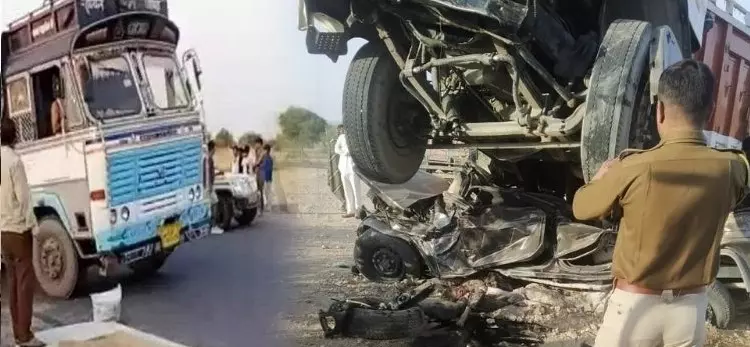MoRTH aims to halve road accidents and casualties by 2030: Gadkari
The number of road accidents in India went up 12% to over 4.6 lakh in 2022
image for illustrative purpose

New Delhi: The government aims to halve the number of road accidents and resultant deaths by 2030, revising its earlier target of achieving the same in 2024, with Union Minister Nitin Gadkari on Monday saying that despite best efforts he has not got the desired results on reducing accidents. Earlier in September 2022, the road transport and highways minister had called upon all the state transport ministers and officials to work together to reduce road accidents and the resultant deaths by 50 per cent by 2024. Releasing a report titled 'Road Safety Good Practices in India' prepared by SaveLIFE Foundation, Gadkari said, “Latest target humne rakha hai ki 2030 ke pehle hum kam se kam 50 per cent accidents aur deaths ko kam karenge (We have set a latest target to reduce the number of road accidents and the resulting deaths in the country by half by 2030.”
According to the latest report by Ministry of Road Transport and Highways (MoRTH), the number of road accidents in India went up 12 per cent to over 4.6 lakh in 2022, resulting in deaths of 19 people every hour. The report had showed that 53 road accidents take place every hour in the country. “A total of 4,61,312 road accidents have been reported by states and Union Territories (UTs) during 2022, which claimed 1,68,491 lives and caused injuries to 4,43,366 people. This marks an increase of 11.9 per cent in accidents, 9.4 per cent in fatalities, and 15.3 per cent in injuries compared to the previous year,” the report titled 'Road accidents in India -- 2022' had said.
Meanwhile, SaveLIFE Foundation's report noted that scaling successful corridor-based road safety practices can save as many as 40,000 lives each year. The report highlighted good practices, such as the National Highway 48 (Old Mumbai-Pune Highway) Zero Fatality Corridor (ZFC) project, that registered a 61 per cent decrease in fatalities between 2018 and 2021. Similarly, the Sabarimala Safe Zone has maintained zero road crash deaths between 2019 and 2021, serving as a blueprint for pilgrimage sites nationwide. The report categorised interventions as corridor-based, network-based, and state-based, covering nine corridor-based, two city/network-based, and two state-based interventions across ten states. Gadkari said by honing in on successful interventions specific to certain corridors or localities, the report provides a nuanced understanding of what works- and what can work elsewhere if appropriately adapted.

